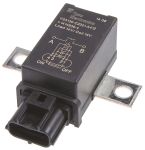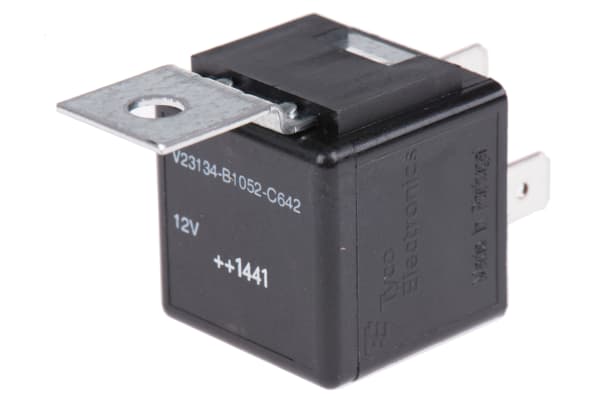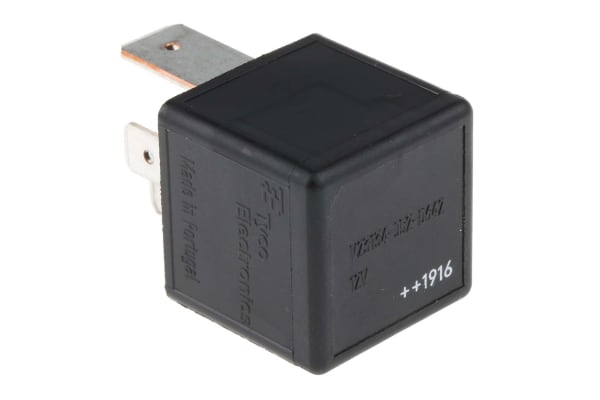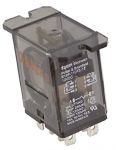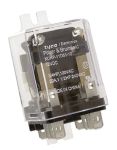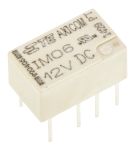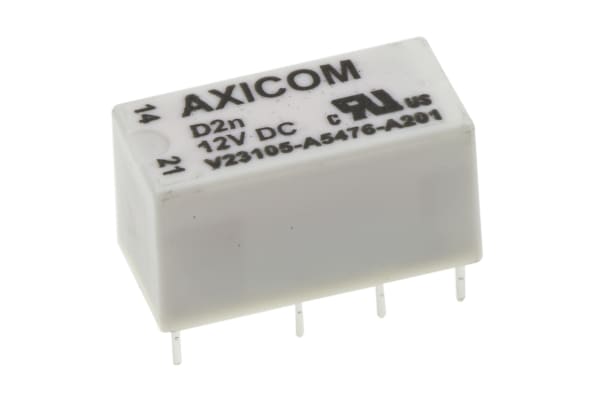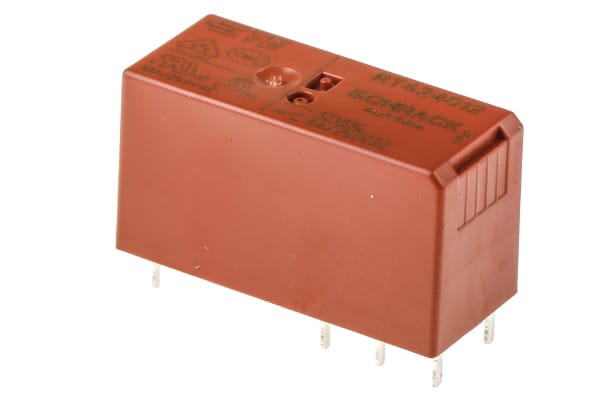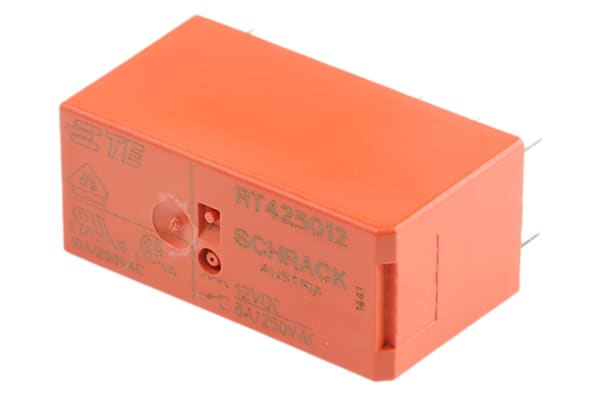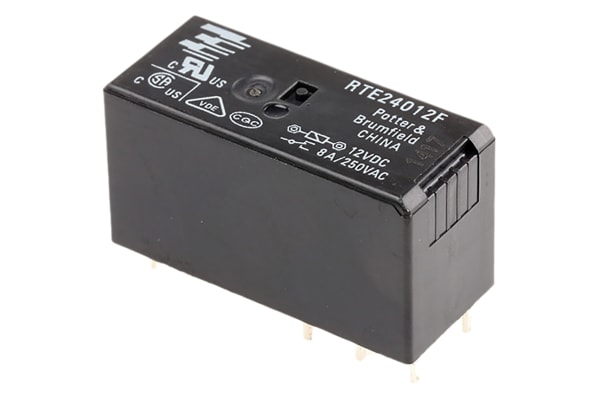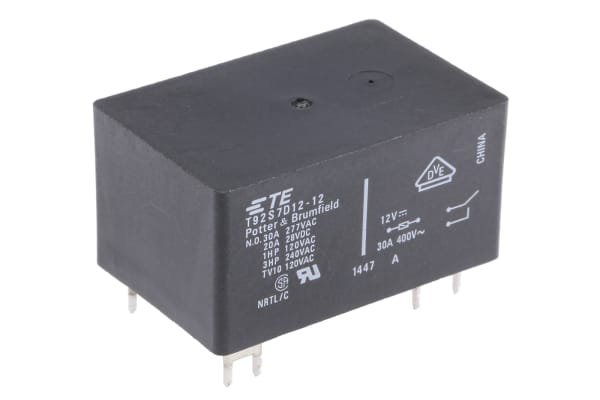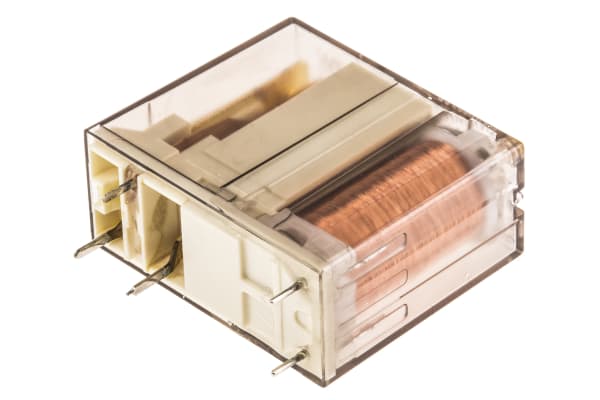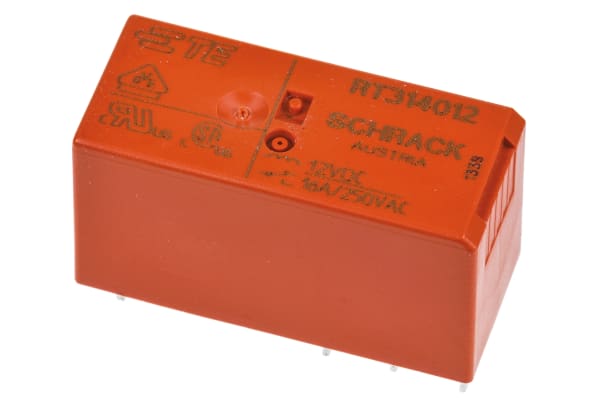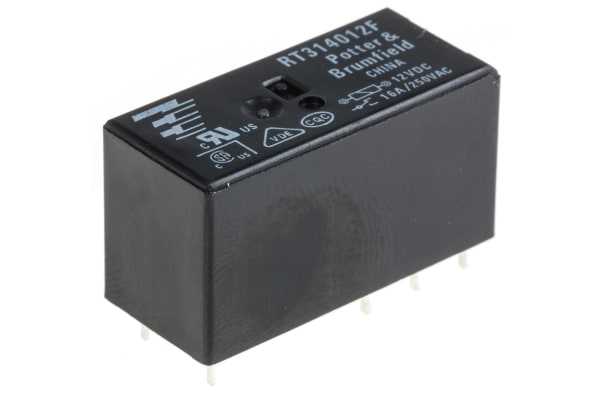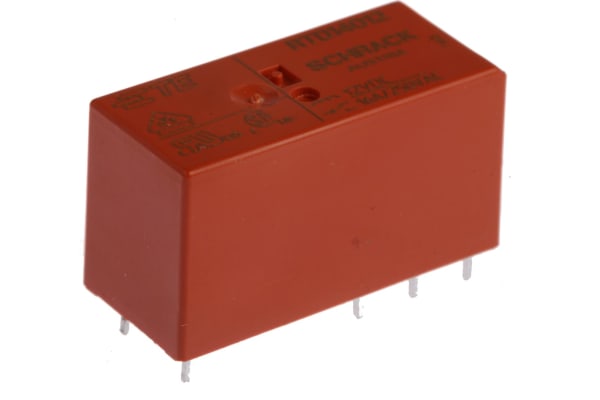Non-Latching Relays
Relays are electrical switches that are operated by electrical impulses with the primary function to open and close a circuit, they can also be referred to as industrial switches. There are 2 main types available, latching and non–latching relays.How do non-latching relays work?Non-latching relays are in a normally closed (NC) position and will stay in this state without power. When power passes through the circuit, the relay switched to a normally open (NO) position by using an internal coil to generate a magnetic force, holding this NO position. Once the current is turned off, it returns to the NC position. This makes non-latching relays well suited to push-button applications like keyboards and micro-controller input buttons.What are non-latching relays used for?Non-latching relays are highly durable and versatile components, making their performance long lasting and suitable for use in a wide range of applications, such as:Automotive enginesHousehold appliancesIndustrial machineryMedical equipmentTelecommunications equipmentWhat is the difference between latching and non-latching relays?Both types of relays in similar in design and function, however, a significant difference between them is that a latching relay will remain in the last position it when it was last powered, whereas a non-latching goes back to its normal position. This makes each more type of relay suitable for different applications. Considerations when selecting a relayWhen choosing a relay, it is important to consider a number of specifications to ensure it is fit for purpose, some factors include:Coil voltage – the required voltage to actuate the switching mechanism. If a voltage is too high this could damage the components, if it is too low then it will not actuate. Contact configuration – This is the state the contacts are in without power. For example SPST, single pole single throw.Contact material – the relay contacts are available in many materials that have certain properties. Common materials are gold, silver, tin oxide and nickel Coil power – the amount of power (watts) the coil operates at. This must match the power in the circuit for correct function. Coil resistance – the amount of resistance (ohms) in the circuit that the coil creates.
-
TE Connectivity, 12V dc Coil Automotive Relay SPDT, 30A Switching Current Plug In Single Pole, 1432787-1
IDR98,386.82 -
TE Connectivity, 12V dc Coil Automotive Relay SPDT, 40A Switching Current Plug In Single Pole, V23134A1052C643
IDR228,765.09 -
TE Connectivity, 12V dc Coil Automotive Relay SPNO, 190A Switching Current Flange Mount Single Pole, V23130C2021A412
IDR1,200,885.61 -
TE Connectivity, 12V dc Coil Automotive Relay SPNO, 300A Switching Current Flange Mount Single Pole, 1393315-2
IDR657,240.74 -
TE Connectivity, 12V dc Coil Automotive Relay SPNO, 40A Switching Current Plug In Single Pole, V23134B1052C642
IDR188,172.66 -
TE Connectivity, 12V dc Coil Automotive Relay SPNO, 50A Switching Current Panel Mount Single Pole, V23134J0052D642
IDR147,894.90 -
TE Connectivity, 12V dc Coil Non-Latching Relay DPDT, 15A Switching Current Panel Mount, 2 Pole, K10P-11DT5-12
IDR274,497.13 -
TE Connectivity, 12V dc Coil Non-Latching Relay DPDT, 20A Switching Current Panel Mount, 2 Pole, KUHP-11D51-12
IDR436,552.18 -
TE Connectivity, 12V dc Coil Non-Latching Relay DPDT, 2A Switching Current PCB Mount, 2 Pole, 1-1462038-6
IDR44,578.25 -
TE Connectivity, 12V dc Coil Non-Latching Relay DPDT, 2A Switching Current PCB Mount, 2 Pole, IM06TS
IDR64,717.13 -
TE Connectivity, 12V dc Coil Non-Latching Relay DPDT, 2A Switching Current PCB Mount, 2 Pole, MT2-C93402
IDR73,527.89 -
TE Connectivity, 12V dc Coil Non-Latching Relay DPDT, 2A Switching Current PCB Mount, 2 Pole, V23079A1003B301
IDR63,458.45 -
TE Connectivity, 12V dc Coil Non-Latching Relay DPDT, 30A Switching Current Panel Mount, 2 Pole, T92S11D22-12
IDR379,806.69 -
TE Connectivity, 12V dc Coil Non-Latching Relay DPDT, 3A Switching Current PCB Mount, 2 Pole, V23105A5476A201
IDR52,549.89 -
TE Connectivity, 12V dc Coil Non-Latching Relay DPDT, 5A Switching Current PCB Mount, 2 Pole, V23079A1003B301
IDR2,501,102.05Tube (1 Tube of 50) -
TE Connectivity, 12V dc Coil Non-Latching Relay DPDT, 8A Switching Current PCB Mount, 2 Pole, RT424012 6-1393243-3
IDR67,129.60 -
TE Connectivity, 12V dc Coil Non-Latching Relay DPDT, 8A Switching Current PCB Mount, 2 Pole, RT425012
IDR148,104.68 -
TE Connectivity, 12V dc Coil Non-Latching Relay DPDT, 8A Switching Current PCB Mount, 2 Pole, RTE24012F
IDR70,800.75 -
TE Connectivity, 12V dc Coil Non-Latching Relay DPST, 30A Switching Current PCB Mount, 2 Pole, T92S7D12-12
IDR281,419.87 -
TE Connectivity, 12V dc Coil Non-Latching Relay SPDT, 12A Switching Current PCB Mount Single Pole, RP412012
IDR153,768.74 -
TE Connectivity, 12V dc Coil Non-Latching Relay SPDT, 12A Switching Current PCB Mount Single Pole, RT114012
IDR63,668.23 -
TE Connectivity, 12V dc Coil Non-Latching Relay SPDT, 16A Switching Current PCB Mount Single Pole, RT314012 9-1393239-5
IDR52,759.67 -
TE Connectivity, 12V dc Coil Non-Latching Relay SPDT, 16A Switching Current PCB Mount Single Pole, RT314012F
IDR66,605.15 -
TE Connectivity, 12V dc Coil Non-Latching Relay SPDT, 16A Switching Current PCB Mount Single Pole, RTD14012
IDR50,661.87





